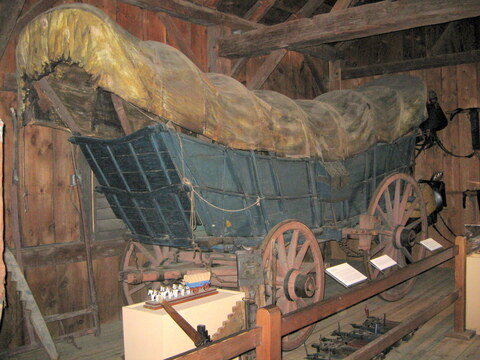
Western Movies Didn't Get It Quite Right
Conestoga wagon—the iconic wagon of the pioneer west!
Actually, no.
We photographed this Conestoga wagon at the Shelburne (Vt.) Museum, one of the nearly 200 sleighs, coaches, and wagons in its “Horse-Drawn Vehicle Collection,” housed in a vast barn shaped, appropriately, like a horseshoe.
If your ancestors made the westward migration, they probably rode in a “prairie schooner,” a smaller, lighter wagon. Conestogas were too big and heavy to lumber across the roadless Great Plains. They were called “ships of commerce.” They were the Mack Trucks of the 18th and 19th centuries. Few, if any, crossed the Mississippi River.
Each Conestoga wagon, drawn by teams of horses, mules, or oxen, hauled up to six tons of cargo. Each had a rear-mounted feed box, for the animals, sort of a pre-industrial gas tank. Conestogas transported goods extensively in Virginia, Maryland, Pennsylvania, and Ohio, often forming long wagon trains. Conestogas’ floors curved upward, so the cargo wouldn’t fall out.
Incidentally, people didn’t ride in Conestogas, only cargo did. People walked alongside, although the wagons did have a wooden plank mounted on one side. It was to accommodate sore feet, and it was called “the lazy seat.”
We frequently visit the Shelburne Museum—39 historic buildings on 45 acres, exhibiting everything from duck decoys to impressionistic paintings. Among other things, it takes you time-travelling back into the past, when much transportation depended on hooves.
It wasn’t just those American pioneers, heading for California, either. Richard’s great-grandmother rode a covered wagon, not so different from the Conestoga, but that was across the Russian steppes.
--Joyce & Richard Read More